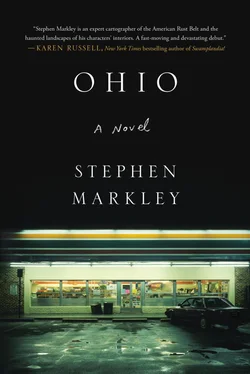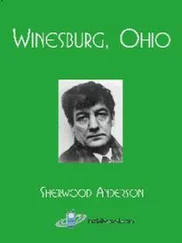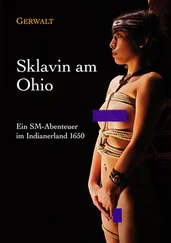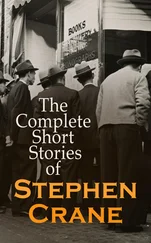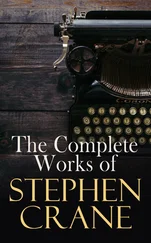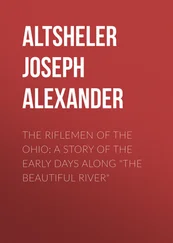At once a murder mystery and a social critique, Ohio ingeniously captures the fractured zeitgeist of a nation through the viewfinder of an embattled Midwestern town and offers a prescient vision for America at the dawn of a turbulent new age.
Topics & Questions for Discussion
1. Discuss your first impressions of New Canaan in the prelude. How are these impressions reinforced—or changed—throughout the course of the novel?
2. Consider the structure of the novel—how imperative do you feel it is to the reading experience?
3. “In them, I see the world that’s coming. The world we’re being banished to” (477). In what ways might the novel’s events feel microcosmic to current events and politics?
4. Consider Bill Ashcraft’s “T-shirt incident” which unites many of the novel’s central characters. How does this incident echo throughout the novel? How does it define Bill? Also, discuss the incident from the other characters’ points of view.
5. “In the last decade, everyone had learned to be a truth masseuse” (106). Discuss the novel in the frame of “post-truth.” Are the narrators reliable? Consider the different angles and perspectives in which we view the characters and their stories. How do these alternating views affect your overall perception of the characters?
6. Ohio is a novel fraught with power dynamics between its characters. How do they differ between the men and the women?
7. “Because people only act—they only change—with a gun to their head” (125) says Bill. Do you think this statement is true in regards to the characters of Ohio ? Do you think any of the characters grew or changed for the better from who they were in high school? Contrast this bleak statement with the optimistic words of Mr. Clifton later on in the novel: “I see some of you kids I had in class years and years ago, and I can never believe the way you grow into yourselves as adults… It still makes me want to cry tears of joy every time” (232).
8. When driving with Bill through town, Dan observes that “New Canaan was one of the minor places that bore the aftershocks of deindustrialization” (283). How else do we see these aftershocks manifest on both macro and micro levels?
9. Hilde tells Stacey that she often makes “self-denigrating comments” towards her “bumblefuck town,’” and advises her to “break yourself of that habit. You’re here. You’re curious about the world” (192). How are Stacey and the other characters in the novel who do leave New Canaan—Bill, Dan, Rick, Ben—still bound to their hometown even as they explore the world? In what ways do they remain distinctly “Ohio”? What makes you think they feel this way?
10. “Where does a girl who’s lost her religion go to find meaning? What replaces the hole that faith, cast off, leaves behind?” (214). Discuss how religion—specifically, Evangelical Christianity—permeates the lives of characters in Ohio , and what replaces “that hole” for each character.
11. “Clichéd inspirational posters making success sound as if it had nothing to do with socioeconomics” (53). How do the characters in Ohio define success? How do their circumstances inhibit or encourage their individual definitions? Do you feel any of the characters might have been doomed from the beginning by their circumstances, or do you feel they sabotaged themselves?
12. “If there’s a gun hanging on the wall in the first act, in the third act, it must be fired”—a “Chekhov’s gun” is a literary principle that advises writers to make sure every element in their stories comes into play at some point. Discuss how author Stephen Markley makes use of this principle. What would be the “Chekov’s guns,” so to speak, in Ohio?
13. The heartbeat of Ohio lies in its vivid characters. Is there one you relate to most, or one that reminds you of someone you know? Discuss with your book club.
14. Dan Eaton pins two quotes to his corkboard before he leaves for basic training: Thomas Paine’s “Those who expect to reap the blessings of freedom must, like men, undergo the fatigue of supporting it” and Abraham Lincoln’s “I like to see a man proud of the place in which he lives. I like to see a man live so that his place will be proud of him.” Discuss these quotes in relation to the events of the novel.
15. “I once read this book about how literature was this vast conversation that mocked all of the borders we normally think of: state boundaries, our own life spans, continents, millenia” (191). Does Ohio hold up to this definition? What borders do you think it mocks?
Enhance Your Book Club
1. J.D. Vance’s Hillbilly Elegy and Amy Goldstein’s Janesville are nonfiction accounts on many of the same themes as Ohio : deindustrialization, the economics of the Rust Belt, the cultural and political challenges faced by the Midwestern working class in the post-9/11 era—and more. Consider reading one or both of these books with your book club and discussing their parallels with Ohio .
2. Choose an epigraph for the novel—be it a lyric, a line from a poem, a snippet from a news outlet, or anything else, find a quote that you feel captures the spirit, themes, and tone of Ohio . Share with your book club.
3. In the novel, Dan and Hailey bond over a love of Calvin and Hobbes, a comic strip inspired by and set in the same suburban Midwest where its creator, Bill Waterson, grew upi. Read a few Calvin and Hobbes strips—in what ways might Calvin’s surroundings feel similar to New Canaan, and the childhoods of the characters of Ohio ?
4. The cover photograph of Ohio is one image from a photo series by Harlan Erskine. Take a look at the rest of series on Erskine’s website: http://www.harlanerskine.com/ten-convenient-stores/tencstores-3. How do the rest of the images feel evocative to the mood and motifs of Ohio ?
A Conversation with Stephen Markley
Congratulations on your first novel. Can you talk about what lit that initial spark that inspired you to write Ohio ?
I’d been trying to write a version of this book for maybe a decade. I think many young authors typically try to explicate the place they’re from in their early work. Everyone has a sense that we need to prove where we come from matters (usually because it does). I finally began to stumble upon the framework that would become the novel after this bad night I had back home bouncing around a few bars, not unlike a few characters in the book. All I’ll say is inspiration is fickle and unpredictable.
Did you grow up in Ohio or the Midwest yourself? If so, how did it inform the writing process—and if not, how were you able to channel such a strong sense of familiarity with a community like New Canaan?
Yes, I did grow up in a small town in Ohio. Also, once I got my driver’s license in high school and my friends and I could sort of venture out to the surrounding towns and cities I became fascinated by the mythology of places that maybe other people wouldn’t find very fascinating: Mansfield, Cleveland, Columbus, Youngstown, Akron, and every tiny burgh and rural highway that connects them. The history, the burdens, the creepy backwoods stories—so much of it was sitting around in my head waiting to be used.
Can you talk about your experiences in the Iowa Writer’s Workshop? Did you start working on Ohio while still a student?
I went into Iowa extremely skeptical, to say the least, about what I’d get from the experience. Stubbornly, I never thought I’d go the MFA route, but there I found myself, and within two months, I was just chugging the Kool-Aid. I had early pieces of Ohio written before I went in, but it went through a Cambrian Explosion–style evolution once I arrived there. It was a completely life-changing experience, not only due to the people heading the classes but also because of my peers, who turned out to be a crop of such funny, fearless, brilliant people. I can’t even name names because the list is too long and full of too much dirt that would compromise people’s careers in the best kinds of ways.
Читать дальше
